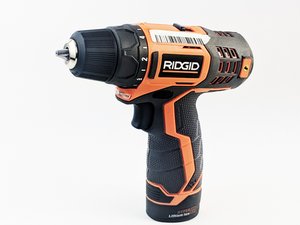Вики, созданная, благодаря помощи студентов
Эта вики выполнена отличной студенческой командой из нашей образовательной программы.
The battery won’t charge
You noticed that when in use the drill’s rotation is insufficient and dies.
Possible underlying cause: Faulty linkage of battery
There won’t be enough power supplied to a drill if the battery can’t hold a charge. If a drill battery can’t maintain a long enough charge for the desired use, it could indicate an inadequate connection between the charging dock and battery.
Solutions
If the battery lacks a charge first begin by checking to confirm that the plug for battery charger dock is in the outlet. Before using the drill make sure the battery charger has a full/standby light indicating the battery is at max charge. If the battery still fails to function look to see if a solid red light is on the charger signaling the battery cell is defective.
Dead battery reads fully charged on charging dock
When plugged in, the light displays a false reading of battery power.
Possible underlying cause: The condition of charging dock
Charging dock port can lose its ability to securely transfer voltage to a dead battery if the cell isn’t inserted properly. Also, drill batteries are manufactured to fit the configuration of specific docking stations, and operators can’t expect to get a full charge using a charger not outlined in the user’s manual.
Solutions
Inspect the drill battery for any damage to the battery stem that prevents a tight connection with the charging station. When inserted into the charging station the drill’s positive and negative power connector should match the chargers voltage port. If operators notice that the charging light comes on when pressing down on the battery, then this could indicate poor connections at the base of charging dock.
Drill is rotating the wrong way
The driving drill bits are not properly tightening or loosening objects.
Possible underlying cause: Unfamiliarity with directional switch
Drills can slip off screw heads when the directional switch is not flicked in the correct spiral path for screws to move in and out of materials.
Solutions
Forward arrows located on either side of the drill represents the three-mode directional switch. Before drilling it’s important to ensure the tops of screws and bolts match the driving bit on the drill otherwise operators can’t begin to secure objects together. To fasten objects the directional switch needs to be pressed down all the way on the right side of drill and thus unbinding objects requires that the life-sided directional switch be tapped. The drill won’t rotate if the directional switch is fixed in a neutral position.
Drill not creating enough force
You notice that the drill’s power is insufficient.
Possible underlying cause: Improper torque setting
When drilling certain surfaces a screw or bolt may not penetrate through because there’s an inadequate twisting rotation at the point of contact.
Solutions
Rotate the adjustment ring (1-17) to the proper torque setting for the type of material and size of screw you are using. The user's amount of trigger pull also affects torque given that different drill gears have a maximum rotation speed. Users seeking greater torque should select lower gears of the drill and opt for higher gear settings when higher spin speed is needed.
Drill rattles during use
When drilling the drill’s instability makes it difficult to make precise holes.
Possible underlying cause: Not compensating for drill recoil at contact point
Improperly holding down the drill trigger when drilling can rattle the operator's hand to the degree that driving bits can veer away from the insertion point. Instability becomes greater when drilling deep into sheet metals and other sturdy materials that have high bonding composites.
Solutions
Drill users are precautioned to place the free hand at the base of the battery to minimize the kickback as a result of drilling. The operator should anticipate a strong binding force at drill bit breakthrough because the drill tends to wind in the opposite direction upon grabbing screws. One way to avoid recoil when drilling is to pinpoint the desired hole location with a center punch utensil that will facilitate smooth screw insertion.

0 Комментариев